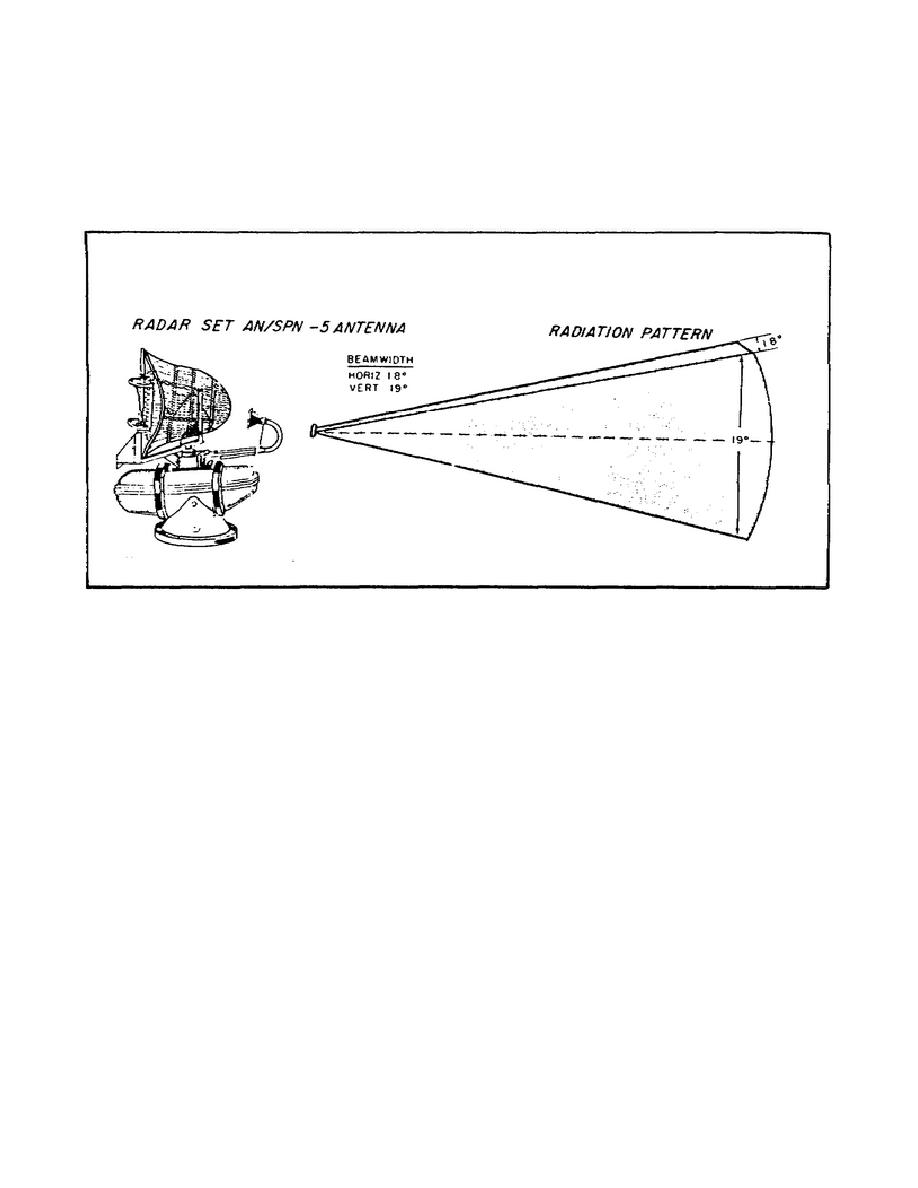
the set accurate azimuth information. The broad vertical beamwidth lets the
set pick up targets even when the ship pitches and rolls.
c. Notice that the orange peel reflector is not solid; it is made of
metal tubes. This type of construction keeps down the overall weight of the
antenna and prevents high wind resistance. Weight and wind resistance are
very important considerations in marine and aircraft applications of radar.
Figure 147.
Antenna Used in Radar Set AN/SPN-5.
d. Notice in Figure 147 how the set feeds RF energy to the orange peel
reflector.
Waveguide carries the RF pulses up from the magnetron.
The
waveguide terminates at the focal point of the reflector in a horn.
The
horn matches the impedance of the waveguide to the air. Although you can't
see it in the illustration, the horn has a plastic cover over its opening.
The plastic cover protects the inside of the waveguide from bad weather and
sea spray.
26. Radar set AN/TPS-1D also uses an orange peel reflector.
a. Radar set AN/TPS-1D is a medium-range radar used primarily as a
search radar in detecting aircraft. It uses an orange peel reflector fed by
a horn-type feed (Figure 148).
The radiation pattern, like that of the
AN/SPN-5, is narrow in azimuth and broad in elevation. An antenna with this
type of reflector is very useful for aircraft search because the radiation
is broad enough in the vertical plane to cover almost all altitudes at the
same time.
204



 Previous Page
Previous Page
